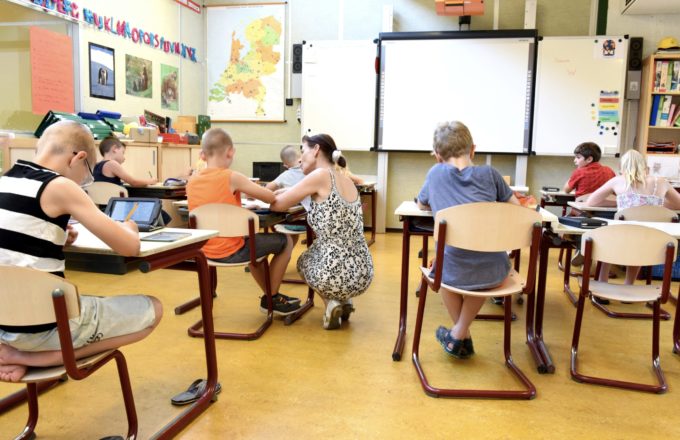Valuable Members of the Educational Team
It is indisputable — paraprofessionals are valuable members of the educational team! These are the people who educators rely on to assist students in the learning process. Each school has their own job title to identify paraprofessionals, such as teaching assistant, aide, or paraeducator. A paraprofessional may be assigned to one student, a small cohort of students, or a whole class. Some paraprofessionals spend their time solely in separate special education settings, while others may be part of an inclusive classroom. Although paraprofessionals’ training, experience, assignments, or settings may vary, there are some key considerations that are applicable to all.
It is indisputable — paraprofessionals are valuable members of the educational team! These are the people who educators rely on to assist students in the learning process. Each school has their own job title to identify paraprofessionals, such as teaching assistant, aide, or paraeducator. A paraprofessional may be assigned to one student, a small cohort of students, or a whole class. Some paraprofessionals spend their time solely in separate special education settings, while others may be part of an inclusive classroom. Although paraprofessionals’ training, experience, assignments, or settings may vary, there are some key considerations that are applicable to all.
The Common Dilemma
A frequent discussion I have with paraprofessionals is how much support to provide for students diagnosed with Language-Based Learning Disabilities (LBLDs), executive function deficits, or related challenges. How much assistance is too much or not enough? I often hear, “Students need to be more independent and do things on their own.” Or, on the other end of the continuum, “We need to complete tasks for students so they can keep up with what the class is doing.” Based on my professional experience, I believe there is a middle ground, while of course considering each student’s individual needs.
To find this middle ground -or balance- paraprofessionals can implement modeling and cueing techniques to build students’ metacognition, executive function, and study skills. There are limitless opportunities to assist students with the organization and planning needed to accomplish their goals. A goal might be to write an essay, complete math problems, study for a test, answer questions about something they read, or one of the many other academic tasks that our students face everyday. When paraprofessionals model their thinking, ask guiding questions, and use cueing techniques, they are putting students on the path to self awareness and independent strategy implementation.
Tips to translate these ideas into practical classroom applications:
- Listen to how the educator poses questions. Then use similar questioning techniques to prompt students and activate their thinking.
- Reinforce structure and routines. For example, reference the posted agenda or direct students to use a two-column note format.
- Micro-unit (breakdown) the task into distinct parts. Reference a list of steps the teacher provided or work with the student to break down the task into discrete, manageable steps. These steps can be written on a sticky note, small whiteboard, or index card in a “to do” list fashion.
- Assist with materials management. Cue students to use established classroom management systems, such as binders or Google Classroom™.
- Assist with time management. Model and teach time estimation strategies to help students prioritize and plan. Guide students to plan out assignments using weekly and monthly calendars.
- Help to manage language volume and complexity. For example, provide graphic organizers to help students make connections between concepts or ideas.
- Encourage problem-solving. Model your thinking as a way to help students troubleshoot when they seem stuck or unsure of what to do. Ask questions like, “What else could you try?” or “What is the next step?”
- Reduce the working memory load. For example, help to create a mnemonic device, chunk information, illustrate an idea, or jot down a key word or phrase. Sticky notes work great here.
Implementing these tips and strategies allows paraprofessionals to be proactive rather than reactive, which in turn sets students up for success.
A Collaborative Relationship
Trust, respect, and communication are essential ingredients in a successful collaborative relationship. We know that the paraprofessional is an integral part of the educational team, which means that they should have an understanding of the students’ strengths and needs. They should be privy to accommodations and modifications outlined in Individualized Education Programs (IEPs). Paraprofessionals can be trained to lead small group lessons and collect data for progress monitoring. And we must not forget that a paraprofessional can provide the teacher with insights into a student’s strengths and needs: what’s working and what’s not. Together the team members can identify and implement strategies to support students.
